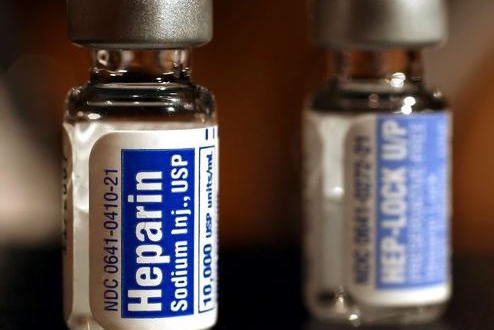
US officials have voiced concerns that supply issues in China raise the risk of fraud and adulteration of an essential anticoagulant medication, which is already in short supply.
In a letter to the US Food and Drug Administration, the Energy and Commerce Committee warned of “inconsistencies and red flags” in import and export data related to Chinese-made heparin, which is used in open heart surgeries and kidney dialysis.
The Committee claimed there could be an impact on US heparin supply, including the risk of a heparin shortage in the US, as well as the risk of economically motivated adulteration, and called on the FDA to promptly develop a contingency response plan in the event of a heparin shortage.
The Committee’s warning is a result of monitoring the Chinese heparin market, borne out of a long-standing investigation into the contamination of crude heparin manufactured in China a decade ago, which entered the US supply chain and caused more than 80 deaths and hundreds of allergic reactions.
In April last year, US lawmakers warned the FDA that another heparin scandal could occur because of vulnerabilities still present in the Chinese system. Just weeks prior to this communication, France’s medicines regulatory authority had uncovered major quality issues at a Chinese supplier of heparin, including the falsification of records.
Heparin is derived from pig intestines. The US is largely dependent on China for its heparin because almost half the global pig supply is in China – about 60 per cent of the crude heparin used to manufacture finished heparin in the US is sourced from the country. This dependence on both China and pigs increases the risk of drug shortages. In addition, global heparin demand has nearly doubled between 2008 and 2015.
According to the Energy and Commerce Committee, “recent trends and interpretation of Chinese customs data for Chinese heparin exports and imports raise troubling concerns”.
Specifically, the Committee reviewed Chinese customs data from three different sources and found that the statistics from the three data sets were not identical. While Chinese heparin exports appeared to surge in 2015, the data sets conflicted for 2016 over whether exports were surging or declining – two data sets suggested about a 13 per cent increase in exports, while the third data set suggested an export decline of more than 26 per cent in 2016 compared to the previous year.
In addition, the data sets showed unexplained increases of exports to Thailand and Hong Kong.
A further unexplained discrepancy was that the customs data showed significant growth in the volume of heparin imported to China, with the US emerging as the leading exporter of heparin to China in recent years, accounting for about 44 per cent of the value of all Chinese heparin imports in 2016. “This is particularly interesting given the US dependency on China for heparin and the limited US heparin supply,” the Committee said.
The Congressmen noted further indications that China’s pig industry faced supply pressures, which questioned the capacity of the Chinese heparin supply. For instance, the Committee also discovered an increased use of unauthorised frozen intestines based on FDA documents, which highlighted numerous instances during FDA inspections of Chinese heparin manufacturers.
“The areas of concern relate to the following: 1) whether the Chinese heparin supply is in fact shrinking or increasing, which could affect the risks of a heparin shortage in the US and could raise the risk of economically motivated adulteration; 2) whether Chinese customs data accurately reflect Chinese heparin export and import activity; and 3) whether the recent emergence of significant US heparin imports to China is further constraining the US domestic supply of heparin,” the Committee said in the letter.
The 2007/2008 heparin scandal is believed to be linked to shortages in the pig supply in China caused by a disease outbreak. It resulted in over-sulfated chondroitin sulfate (OSCS) intentionally being added to heparin manufactured in China, with the intention to fool identity testing. The perpetrators have never been identified, although dozens of Chinese suppliers were put on import alert.
At the time, the scandal was seen as the most serious threat to the integrity of the US drug supply chain and identified the importance of monitoring significant changes in supply and demand in the Chinese heparin market, which could indicate an increased risk of adulteration.
Since the scandal, the FDA has taken several steps to protect the safety of the US heparin supply, including guidance on crude heparin quality monitoring, and has also proposed the reintroduction of bovine-sourced heparin.
©
SecuringIndustry.com
 | back to top
| back to top





